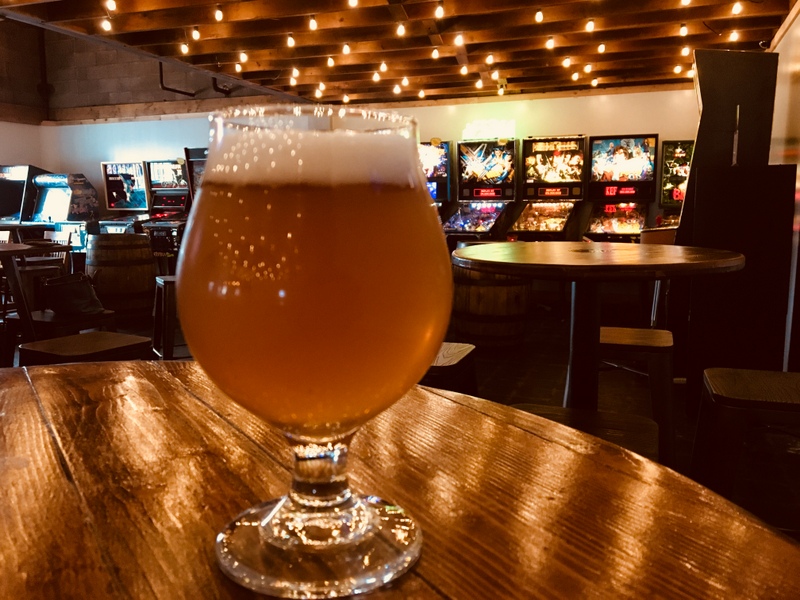Dispelling the Myths Behind Utah’s Emerging Beer Scene
Let’s face it, when you are planning a vacation around beer, Utah isn’t usually at the top of the list. The liquor laws that dictate ABV and where you can consume may deter serious beer drinkers before even firing up an Airbnb search. However, Utah beer has a character of its own, a character that is both quiet and formidable all at once: A sleeping bear that is slow to wake but indomitable when angered. As such, let’s dispel some of the myths surrounding Utah’s beer culture.
Utah has weak beer.
While it is true that “high point” beer isn’t as accessible in the state of Utah as it is in other areas of the country, most Utah beer falls within the global average of alcohol content. The difference is that the Utah Department of Alcoholic Beverage Control (DABC) measures alcohol by weight, not by volume. The global average percentage of alcohol by volume (ABV) ranges between four and six percent. Utah beer that is readily available at convenience stores, grocery stores and gas stations is 3.2 percent alcohol by weight, which roughly equates to four percent ABV. This means that most beer falls within the global average, albeit at the low end. This isn’t necessarily a bad thing considering many micro-breweries across the nation are pushing out “sessionable” beers—beers that are designed to be consumed constantly throughout the day without causing severe intoxication.
Good beer is hard to find.
Good beer is easy to find in Utah—you just have to visit each respective brewery to get it. In 2017 alone, Utah took home two gold medals from the Great American Beer Festival: Squatters Brewing took home the gold medal in Belgian-Style Blonde Ale or Pale Ale for Hell’s Keep and Red Rock Brewing Co. took home the gold in the Kellerbier or Zwickelbier category for their Zwickelbier. Furthermore, the New England style Double IPA from Kiitos Brewing can stand against many other beers of the same style from much bigger breweries, in my opinion. Utah is saturated with great beer—you just have to know where to find it.

Utah breweries aren’t creative enough.
Utah can be behind the curve at times but leads the pack at other times. Lately, I have seen several breweries putting out sour IPAs, for example; my official “Beer of Summer” in 2016 was the Sour IPA from Epic Brewing. And Red Rock Brewing’s famous Paardebloem uses dandelions as a bittering agent that gives this Belgian Ale a distinctive flavor profile that is crisp, mildly tart and very refreshing.
What catapults Utah to the apex of Beercations is the endless opportunities for adventure given the locations of the breweries. What better respite could you have after rafting the Colorado River or rock climbing legendary Wall Street than a Dead Horse Amber Ale from Moab Brewery? After hiking Angel’s Landing, one of the most dangerous hiking paths in the world, what better way to confess your sins than over a Conviction Stout or a Red Altar American Red from Zion Brewery? Visit Utah’s Olympic Park during the summer or world-famous Park City Ski Resort during the winter and enjoy an Imperial Pilsner from Park City Brewery. If you are in Salt Lake City, grab a crowler from Fisher Brewing and drive 30 minutes in any direction for excellent mountain biking or hiking trails.
Look, I get it. Why would you choose to visit Utah for a Beercation when you could go next door to Colorado? That’s a fair argument. They have similar recreational opportunities and it is arguably the best state in the country for beer. But Utah has a charm about it that is difficult to articulate. I love traveling to other places to check out their beer but no matter how many amazing places I visit, there’s no better feeling than coming home.
-
You don’t have to go to breweries to get high point craft beer. You can get it from liquor stores and just about every restaurant. Bars obviously carry high point local craft beer as well.
-
That is correct. However, the liquor stores do not have any uniformity in what they carry, and there is no guarantee that the beer will be fresh. The DABC also closely regulates what is carried in their stores, so breweries don’t have the opportunity to have their entire lineup available.
Restaurants are only allowed high point beer based on the liquor license they have. Many restaurants are without the required license, so their draft beer is mandated at the “low point.”
Lastly, Bars are not always a viable option. Some specialty bars provide a great selection of craft beer, but it is usually at the consumers expense. They mark up the cost of beer so they can profit off of their products, which is fine. But I like having the option to drink the same beer for cheaper in the comfort of my own home.








Comments